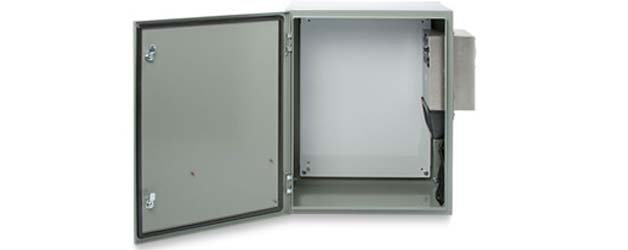Electricity is essential in today’s world. In industrial and commercial environments, where personnel relies on the power to execute their responsibilities appropriately and securely regularly, a robust, reliable electrical connection is more important than ever.
Building systems require electrical manufacturers’ enclosures and the physical wire that provides electrical currents to maintain proper working conditions for the system. PCB enclosure box India must often be custom-made because the electrical system for each structure is dependent on the amount of energy required.
This blog will go over the most critical factors to consider when designing an electrical enclosure.
- Type
Electrical enclosures come in various shapes and sizes, each designed to accommodate systems with multiple requirements. Servers, for example, are usually housed in huge, free-standing enclosures, whereas residential electrical enclosures can be installed on the wall.
Most electrical enclosures in industrial and commercial environments are free-standing or equipment-mounted. As the name implies, equipment-mounted sections are built into the frame of a machine to save space in a facility. The sort of PCB enclosure box India you choose is frequently determined by the following two factors: location and layout.
- Location
Like any other critical building component, electrical enclosures must be installed in areas that meet particular specifications. Because these environmental elements can affect the overall operation of the electrical system, your enclosure should be placed in a room with a generally consistent temperature, ambient light, and moisture level.
You may also have to choose your placement depending on the size of the electronic panel box or the quantity of space you have available. When space is limited, equipment-mounted enclosures are a popular choice on factory floors, although most of the electrical components are small.
- Layout
Ganga Metco first understands the design of your electronic panel box before making any decisions on the layout of your electrical enclosure. Estimate the finished measurements of all the components using a schematics sheet.
You may need to design additional electrical enclosures in some circumstances. When servers are connected to the primary electrical system, the server is frequently placed in a separate enclosure. The enclosure must be extended and adequately designed to accommodate both the panel and the server.
- Materials
Once you’ve determined the actual size, form, and location of your electrical panel and enclosure, you can start planning the physical enclosure’s construction. Consider your significant source material first.
Sheet metal is used in most industrial and commercial electrical enclosures, but some project managers or contractors choose to use other materials such as fiberglass. Long-term durability, control panel box manufacture, and more accessible safety and security measures are all advantages of metal.

Although aluminum and copper enclosures are available from some fabricators, steel and steel alloys are the most popular electrical enclosure materials due to their inherent strength and corrosion resistance. Steel sheets can also be adjusted to meet practically any dimension required for the enclosure.
- Fasteners
You must also decide how the parts of the final electrical enclosure will be joined together, in addition to the primary material. The enclosure’s material usually determines the sort of fastener you use.
Steel, for example, is entirely compatible with Ganga Metco. They can produce quicker results with less access to the metal enclosure box. With your fabricator, go through your fastening options.
- Manufacturing
Once you’ve decided how your electrical enclosure will be manufactured, you’ll need to discuss your electrical distribution box price and assembly alternatives. The fabricator may be able to come to your business or work location and construct the enclosure there.
In some circumstances, the fabricator will finish the enclosure offsite and ship and assemble the electrical enclosure at its final destination.
- Security
In addition to the initial manufacturing and installation of your enclosure, your control panel box manufacturers may take further steps to assure its safety and security. These steps could include the following:
1. Coating the interior and outside of the building with an anti-corrosion coating.
2. Taking steps to minimize the danger of pest infestation, particularly from rodents
3. Installing heat control components to regulate the temperature inside the enclosure
4. Using an essential system for access control on a critical electrical enclosure
Make sure to bring up any issues you have about the enclosure’s safety or security. If your enclosure is exposed to more wetness or heat than usual, for example, different precautions may be required.
As you implement a design for a new electrical enclosure in your facility, office building, or industrial site, keep these issues in mind. Work with a qualified electrical enclosure manufacturer in India like Ganga Metco to guarantee that your final specifications fit your systems’ and building codes’ needs.

